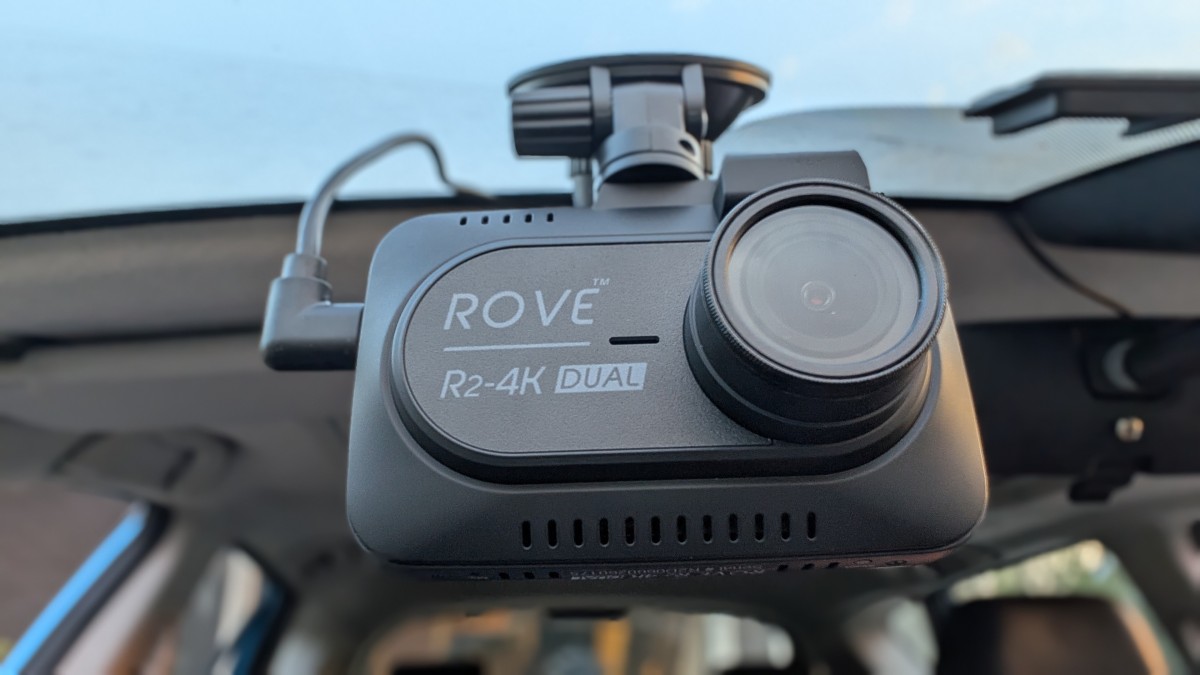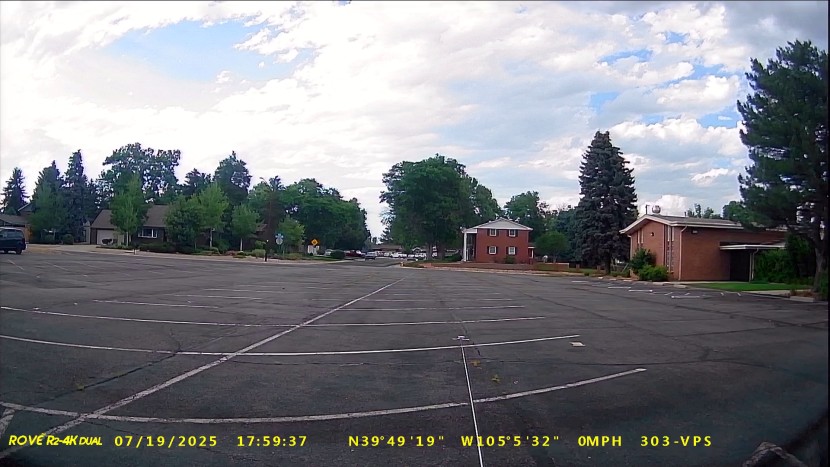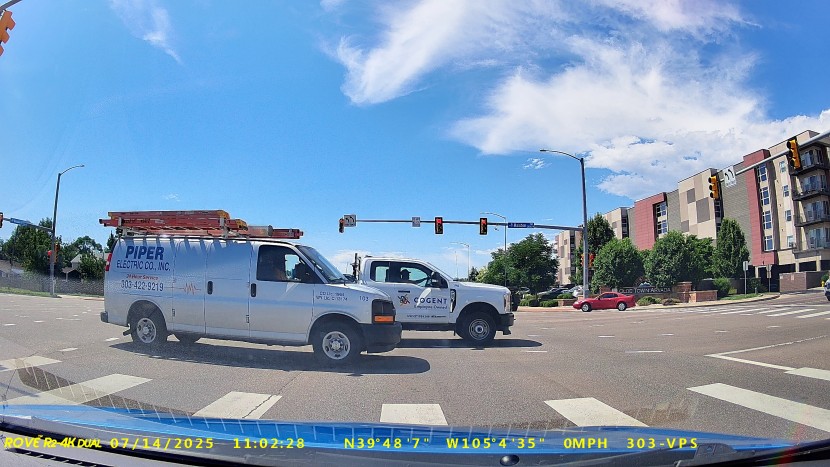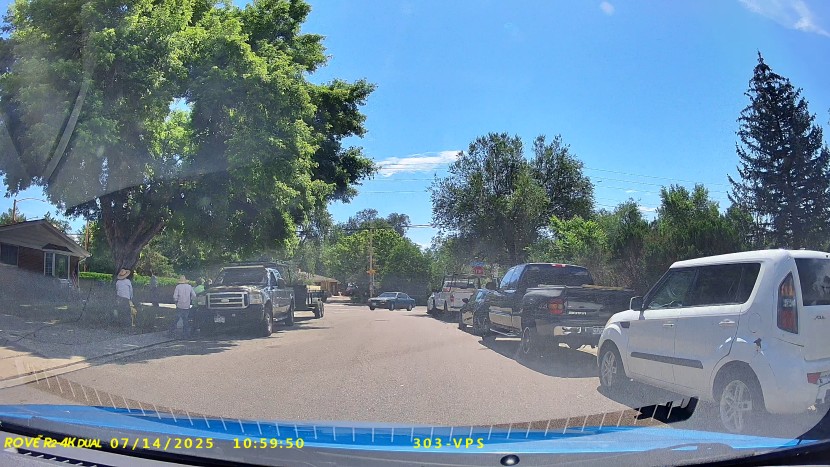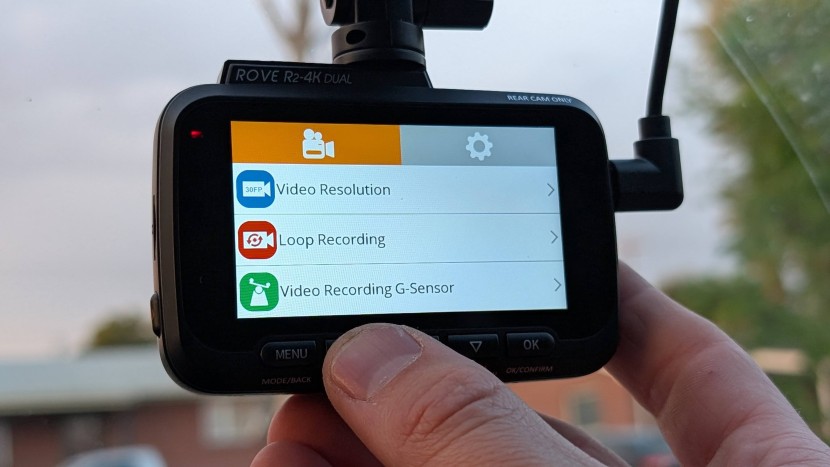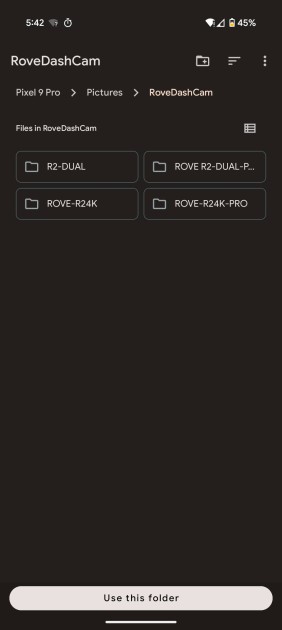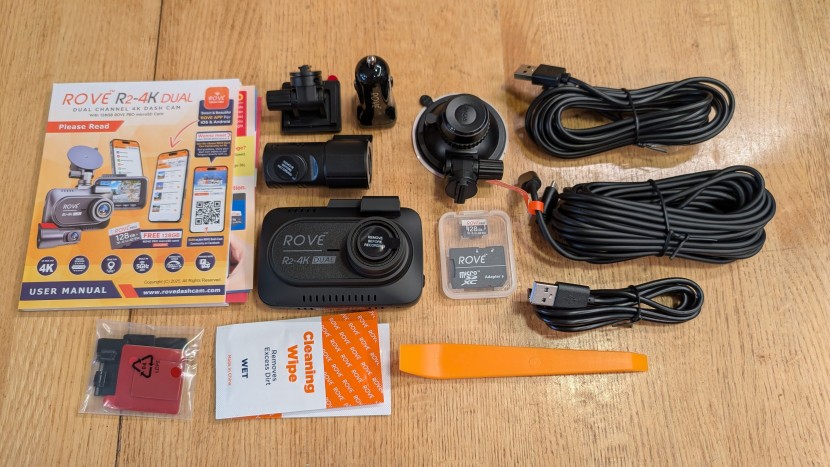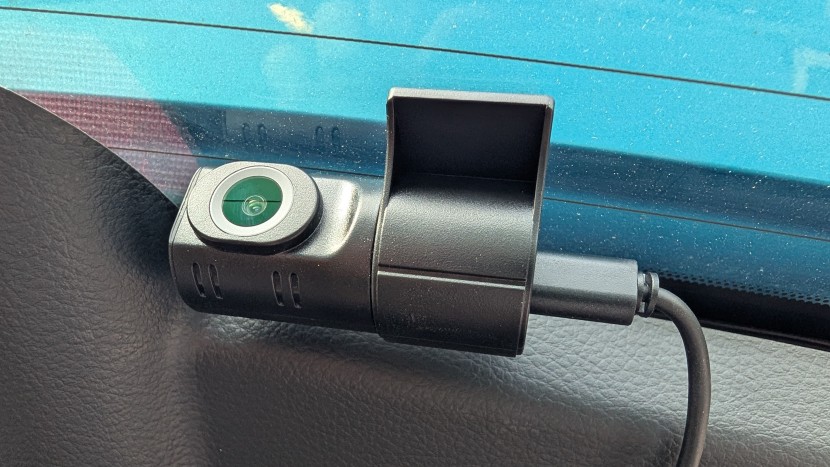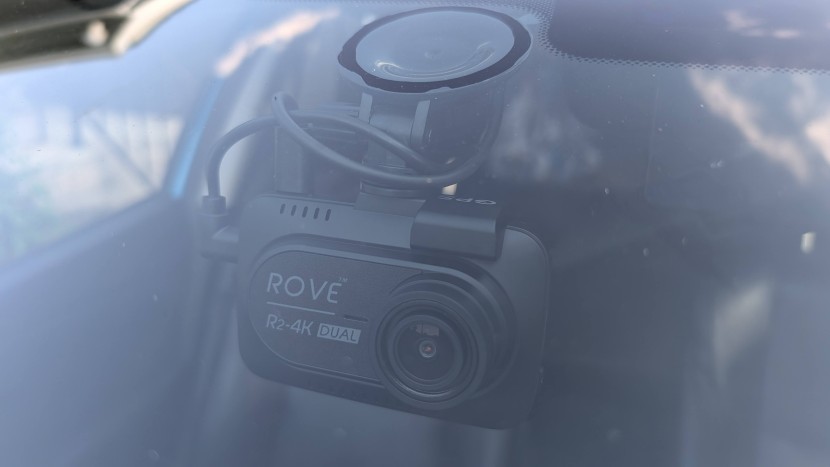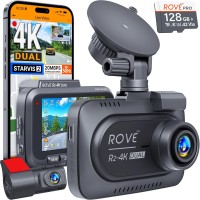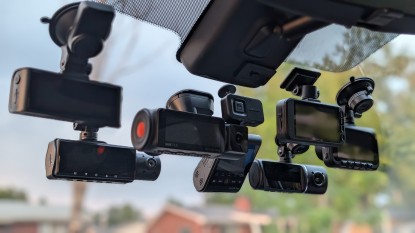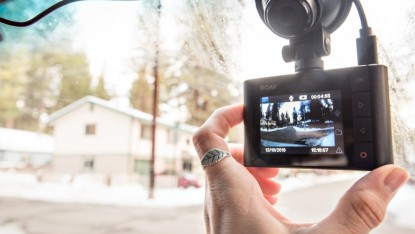
Our Verdict
Our Analysis and Test Results
Rove is a US-based company that focuses exclusively on dash cams and their accessories, and we really like what they have to offer. What you get with the R2-4k is top-tier performance without needing to spend an arm and a leg.
Video Quality
First things first — the Rove R2-4K Dual captures some fantastic video. Details are crisp, colors are vibrant without being oversaturated, and absolutely everything appears to be in focus, from nearby bushes to the leaves on trees hundreds of feet away. Color us impressed!
Daylight capture is particularly great; the Rove competes for the top spot among our full lineup, which is to be expected. Resolution is superb, advertised as a full 2060p, which is double that of many other options we tested. While stopped at a light, license plates 2-3 vehicles ahead can easily be read from screenshots, while the intersection street signs overhead can be read 4-5 vehicles ahead.
The rear camera was similarly impressive. It has a lower resolution than the front, but we were still easily able to see the faces and clothing of drivers behind us, for example. Rest assured, if you get rear-ended, any and all details you'll need to identify the vehicle and driver in question will be captured.
The frame rate on both cameras leaves a bit to be desired. Certain LED headlights and stoplights showed up as flashing on video, which tells us that the frame rate is low enough to be noticeably out of phase. That's not the worst thing, as we assume this decision was made to keep video file sizes somewhat manageable, especially considering the added data burden of high-resolution capture.
Night capture was similarly good, bordering on excellent. Lighting correction was pretty even, which is a tall task considering the capture of both blinding headlights and the darkness of a rural road in the same frame. There's clearly some HDR (high dynamic range) software correction going on behind the scenes, and it's working well. While we did see some lens flare and glare through the glass, it appeared to be more controlled and minimal compared to most tested units. Ultimately, many details, like sign lettering, were very readable.
Video Coverage & Function
We measured that the R2-4K's combined front and rear cameras see a total of 203° around your vehicle, or a little over 50%. This is well above the average of our lineup and fairly close to the manufacturer's advertised field of view specs. The wide-angle lenses tend to give a noticeable 'fish eye' effect around the edges of the frame, a little more prominent than average, but not enough to affect the usefulness of the footage.
The R2-4K doesn't have many auxiliary features and functions, but what it does include is done well. There's no voice command or driver alerts, which we think is largely overkill on other units, but we do wish it had a cabin-cam upgrade available. A polarizing lens and a battery voltage-monitoring power setup for Parking Mode are both available as upgrades.
What it does have is a built-in GPS logger that is better than most units we tried out — you'll notice it updating every few seconds on the video overlay. Plus, it comes with a 128GB microSD card, which is by far the highest capacity we've seen included with our models. The unit also captures sound, which might be too good actually. Speech and music were clear, but it also picks up a lot of road noise.
Ease of Use
Once the unit is installed, setting up the R2-4K can be done via an app or directly through the physical unit. The front unit has the camera, with a large 3" screen and four navigation buttons. We found the interface intuitive, but if you need to consult the manual, know that it was the most comprehensive manual we've seen for a dash camera.
If you prefer to set up via your smartphone, the Rove app is solid and straightforward; it doesn't try to do too much. The menus were decent enough to navigate. We will note that using the app does require an account setup, which we don't love, but the app is NOT required to use or set up the unit, which we do love.
In our opinion, the easiest way to recover footage is to remove the SD card and download it on a computer. Videos can also be viewed and downloaded through the app, of course; the files download to your camera's memory, and playback is simple. However, every time you want to do so, you must prompt your unit to set up a temporary Wi-Fi signal, which you'll connect to, and each video takes 15+ seconds to download.
Ease of Installation
Install is pretty standard; you'll mount the main unit on your windshield and run power and rear-camera cables hidden in the trim throughout your car. We clocked ourselves at 32 minutes to install both front and rear cameras, and perform the initial setup (things like formatting the memory card, preferred language and units, and recording loop time).
Both cameras come with a simple adhesive pad mount, but the front cam is heavier and also includes a stronger suction cup option. The unit also ships with small electrostatic films to help promote adhesion, which is really nice as we've had our fair share of suction cups semi-melt and fall off in the hot summer sun.
Should You Buy the Rove R2-4K Dual?
Well… the Rove is what most of us on the testing team would choose. This kind of peace of mind is worth the cost, in our opinions, and is what we would ultimately recommend to others in most cases. You get stellar performance in nearly every aspect, without throwing away cash on diminishing returns.
What Other Dash Camera Should You Consider?
If the high scores here piqued your interest, we do have another model to recommend that performed even better: the Vantrue N4 Pro Dual. You'll pay dearly for the privilege of ownership, but what the Rove does well, the Vantrue does even better.
We don't think you'll find anything better in this price range, but moving down the cost ladder a bit, we really like the minimalist, user experience-focused Garmin Mini 3. The Miofive S1 is another value unit on the more budget end of things, but only poor performance and broken promises await you with the very cut-rate models.
| Awards | Best Dash Cam for Most People |
|---|---|
| Price | $200 List Check Amazon (on sale!) |
Overall Score  |
|
| Star Rating | |
| Bottom Line | A premium product delivering great performance at an acceptable price point |
| Pros | Fantastic video capture, front and rear cams, GPS tracking |
| Cons | Complex install and setup, account required for app use |
| Rating Categories | Rove R2-4K Dual |
| Video Quality (40%) | |
| Video Coverage & Function (30%) | |
| Ease of Use (20%) | |
| Ease of Installation (10%) | |
| Specifications | Rove R2-4K Dual |
| Cameras Included | Front, Rear |
| Front Camera: Advertised Resolution & Field of View | 2160p / 150° |
| Rear Camera: Advertised Resolution & Field of View | 1080p / 140° |
| Combined (Front & Rear) Advertised Field of View | 290° |
| Combined (Front & Rear) Measured Field of View | 203° |
| Cabin Camera: Advertised Resolution & Field of View | N/A |
| Measured Screen Size | 3" |
| Measured Camera Dimensions (W x H x D) | Front: 3.7" x 2.5" x 1.5" Rear: 2.3" x 1.5" x 1.2" |
| Voice Command Control | Yes |
| Notable Features | GPS, App |
| Available Upgrades | Polarized Lens, Parking Mode Kit |
| File Storage | 128GB microSD included (up to 1TB supported) |
| Sound Capture | Yes |
| Mounting Method | Suction Cup, Adheisve Pads |
| Required Operating Temps | 14℉ ~ 131℉ / -10℃ ~ 55℃ |


